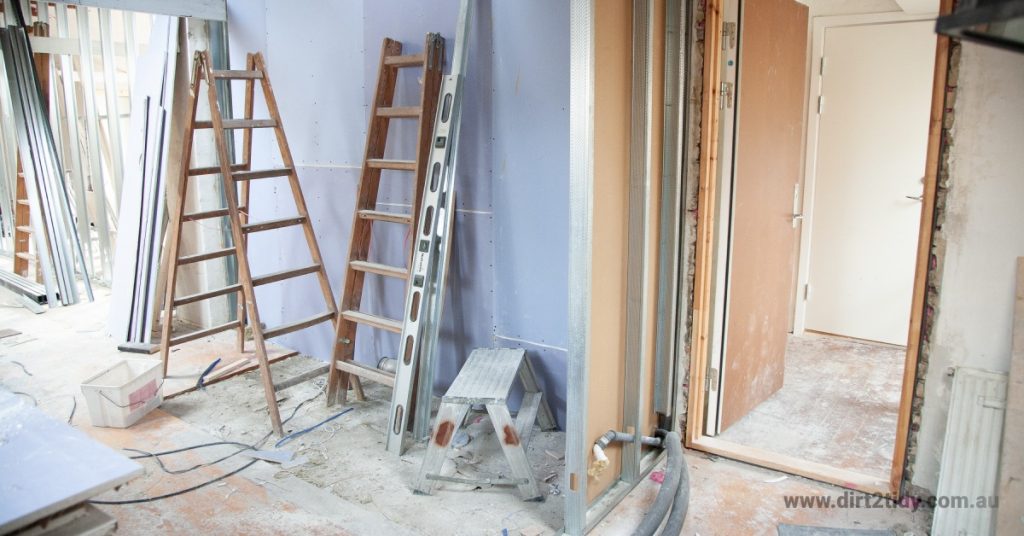Table of Contents
Whether you’re remodelling for profit or to make your renovate property into the family home of your dreams, it’s a huge undertaking with the local council and a building practitioner being a must depending on the scale of work.
Renovate your house, no matter how big or little necessitates a great deal of attention to detail with the building project. However, if you set yourself up correctly with a clear goal in mind and project management, you may save yourself a lot of trouble.
WHERE DO I LOOK FOR A RENOVATE YOUR PROPERTY?
In the estate agent’s description, properties suitable for remodelling are frequently labelled as “in need of modernisation.” This might entail everything from a new kitchen or windows and doors to some aesthetic changes, as well as the removal of a tree that has grown in the lounge. So, before you start shopping for a home, figure out your budget and how much structural work you’re willing to do.
After that, you may begin your search. Estate agencies and internet property databases like Plotfinder are obvious places to look. Local auctions are also a terrific way to locate a bargain.

You could have even seen promise in a home that isn’t on the market right now. It’s uncommon but not unheard of for people who had no intention of selling to reconsider after receiving a well-written letter from a potential buyer.
The procedure
Renovate and extensions are divided into four stages, each of which may require various experts:
Assessment and design — You can create your own adjustments or hire a professional registered building practitioner to assist you. A qualified energy assessor may conduct an assessment of your house and advise you on the most cost-effective methods to increase energy efficiency.
An architect or designer might be able to help with this, as well as draw up designs for structural alterations to build or renovate. Your building contractor may be able to offer design assistance or maybe have a designer on staff.

Permissions – If you need council approvals, you may do it yourself or hire a professional to assist you with the building permit. Your architect or builder should be able to assist you with this.
Building — you may do it yourself or hire a professional. Some specialised modifications, such as plumbing, gas, and electrical work, will necessitate the use of licenced professionals.
If you want certification, you will need a council building inspector or a qualified private certifier to inspect the construction before starting work the certification can be completed.
What Does Residential Construction Entail?
The NSW Home Building Act defines residential building work as any work that is involved in, or involved in coordinating or overseeing any activity in:
Constructing a home, making adjustments or additions to a home, or repairing, renovating, decorating, or protecting a home renovate
A “dwelling” is defined by the Act as a structure or component of a structure that is intended, erected, or modified for use as a habitation (such as a detached or semi-detached house, transportable house, terrace or town house, duplex, villa-home, strata or company title home unit or residential flat).

What counts as domestic building work?
Domestic building work is a broad term encompassing a wide range of activities. This includes not only constructing new homes, but also renovating, extending, altering, or improving existing dwellings. Common examples are refitting kitchens and bathrooms, landscaping the garden, paving driveways, and carrying out site works.
It’s not limited to the main structure—building a new detached dwelling, or adding structures associated with a home such as a garage, shed, fence, spa, or carport, all fall within this category. Even removing or relocating an existing dwelling intended for use as a residence is considered domestic building work.
In summary, if the work involves making a place more habitable, safe, or appealing—whether that’s by altering the kitchen, building a granny flat, or simply adding a new fence—it likely falls under the umbrella of residential or domestic building work as defined by the Act.
If you want a formal contract from your owner builder or tradesperson, you must:
The contract price is over $5,000 (including GST) or is unknown, and it is for the contractor’s provision of labour and supplies at a reasonable market cost of more than $5,000. (including GST).
A brief employment contract with minimal information is required for jobs worth $5,000 to $20,000. More detailed written contracts are required for construction works valued more than $20,000.
Contracts for small jobs
A small jobs contract must include residential construction work costing $5,000 to $20,000.
You may also like to read : What’s cheaper: buying new or renovating?
Each party must date and sign the written contract, either personally or on behalf of the other. It may stipulate that labour be compensated on a regular basis.
Contracts for large jobs
Residential construction work worth more than $20,000 necessitates the use of a detailed house
construction contract, which must include the following:
The parties’ identities, including the name of the holder of the contractor licence as indicated on the contractor licence the date it was signed by both you and your contractor the parties’ names, including the name of the holder of the contractor licence as shown on the contractor licence Before you sign a contract, verify sure the information are valid by using our house renovate online licence check.

Legal Requirements for Building Contracts in Queensland
In Queensland, while there’s no universal contract template that builders or contractors must use, there are strict rules about what must be included to comply with local law. The contractual obligations vary based on the value of the building work, and it’s essential for both homeowners and contractors to understand these distinctions before signing.
For projects valued between $3,301 and $19,999, the contract needs to be in writing, with clear identification of all parties involved, including accurate contractor licence information. It must outline the scope of work, attach relevant plans and specifications, and specify the location of the project. To further protect homeowners, the contract should also include a notice detailing the statutory cooling-off period.
When the job exceeds $20,000, more comprehensive documentation is legally required. These contracts must still be in writing, signed and dated, and include all the particulars mentioned for smaller jobs. In addition, the contract price—whether fixed or subject to adjustment—must be prominently disclosed, with any formulas or calculation methods made transparent. Before any signature is applied, homeowners must also be provided with the Queensland Building and Construction Commission (QBCC) Consumer Building Guide.
Other key requirements for contracts over $20,000 include:
- Stating the starting and completion dates, or explaining how these will be set (for example, “within ten business days of receiving building approval”).
- Providing a full description of the work to be performed and attaching all necessary plans and specifications.
- Clearly setting out all owner and contractor details as shown on the contractor’s licence.
- Including relevant information about statutory and implied warranties that protect the homeowner.
By ensuring all these contract elements are met, both contractors and owners can help prevent disputes and set clear expectations throughout the course of the building project.
The Home Building ACT
A sufficient description of the work to be done plans and specifications attached relevant warranties required by the Home Building Act 1989 the contract price, which must be prominently displayed on the first page and a warning with an explanation if the contract price is subject to change or if the price is unknown the contract price, which must be prominently displayed on the first page and a warning with an explanation if the contract price is subject to change or if the price is unknown
A clear statement stating that if the contract is worth more than $20,000, you have a five-day cooling-off period after receiving a copy of it.
If you can’t respond yes to all of the items on the checklist, don’t sign the contract.
Consider the following points:
When studying the conditions of a building contract, regardless of whether it is a Small Jobs contract or a Large Jobs contract, there are a few things to keep in mind. These are some of them:
The difference between a “Lump Sum” and a “Costs Plus” contract, as well as the difference between these two types of contracts, can have an impact on cost “blowouts” throughout the building process.
What percentage of the building expenses are “fixed costs” as opposed to “provisional allowances”?
Time provisions – does the contract clearly state when the job will begin as well as when it will be completed?
Liquidated damages and delayed damages – what are the penalties imposed on the property owner and the contractor, respectively, if the project is delayed owing to one of the parties’ conduct, and are they reasonable?

Payment conditions – does the contract’s schedule of claims appropriately represent that the amount due is commensurate with the work completed to the date of payment?
You may also like to read: What part of home remodeling do you enjoy most?
How is practical completion defined in the contract, and what are the implications and responsibilities of the property owner once this stage of the building process is reached?
Consumers should be aware that many standard form contracts used in the building business are substantially weighted in favour of the builder since they are created by construction industry groups. Whether you’re building your first house, extending or renovate your current home, or constructing a residential investment project, it’s critical to seek legal counsel on the conditions of a construction contract before signing it.
Where to Find Reliable Information
If you’re keen to uncover more about your rights and responsibilities as a homeowner during a renovation, reputable sources are just a few clicks away. The Queensland Building and Construction Commission (QBCC) website provides clear, practical details about deposits, variations, payments, and contract essentials—especially for those wanting to read the fine print themselves.
Additionally, many state or territory building authorities have easy-to-follow guides covering everything from contract variations to dispute resolution. For NSW, visit Fair Trading NSW; for Victoria, check Consumer Affairs Victoria. These sites not only explain your legal rights but also offer downloadable checklists, standard contract templates, and contact details for dispute assistance.
And, of course, if you find yourself puzzled by any terms or would like peace of mind before you sign, it’s wise to seek tailored advice from a legal professional familiar with residential building contracts. Doing your homework here can save plenty of headaches later on.




